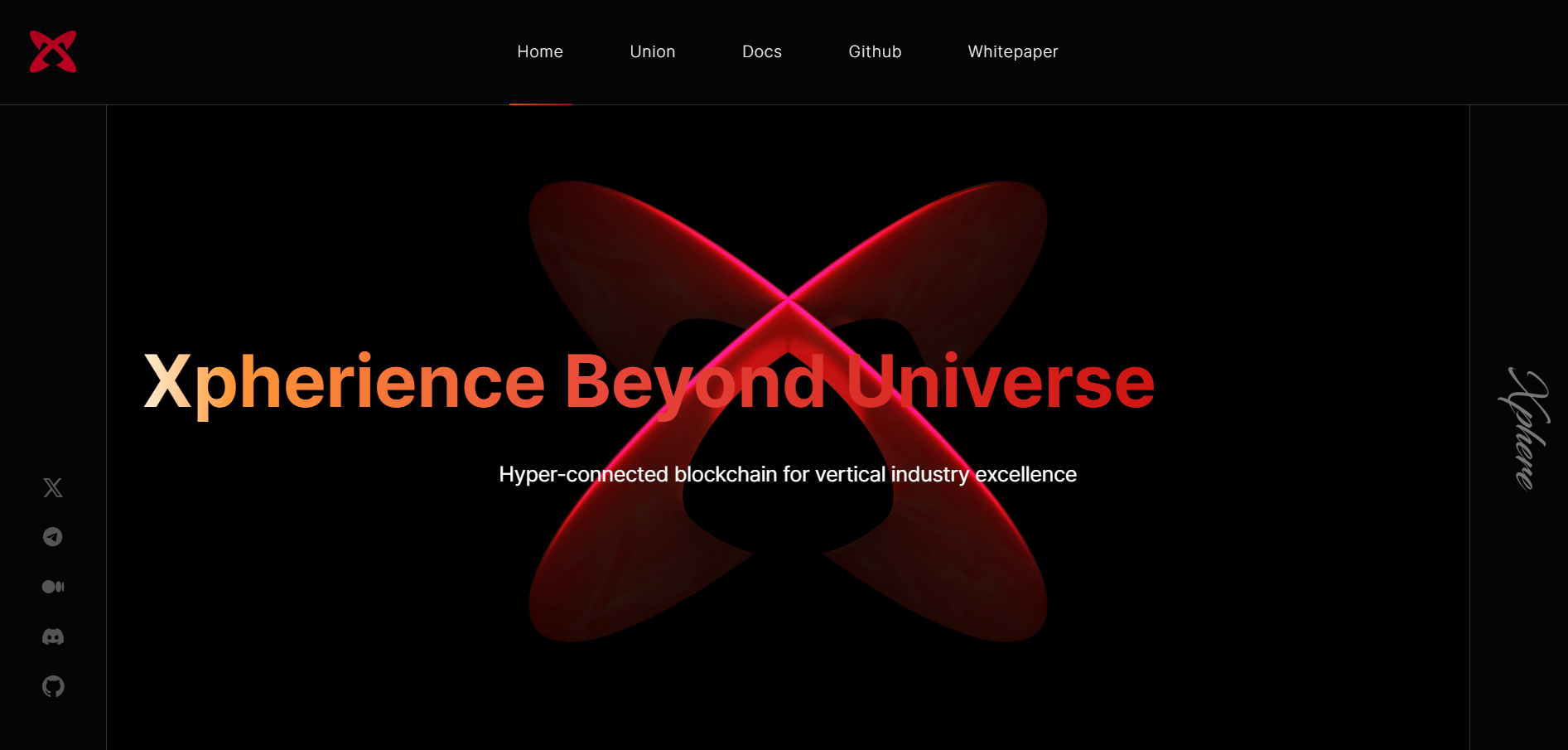
What's good in the hood, folks? I'll tell you what. Today my guest is Kritesh Tripathi — Co-Founder, of XPHERE!
Kritesh is a Web3 and blockchain technology leader with global experience across South Korea, Dubai, and India. He is currently the Co-founder of Xphere and formerly led technology initiatives at Coinfantasy, Cifdaq, Peri Finance, and Ducato’s Delio DeFi Division. As Ecosystem Lead at Klaytn Network (subsidiary of Fortune 500 company Kakao Corp), he played a key role in blockchain ecosystem growth. Earlier, he contributed to technology innovation at Fortune 500 giants like Samsung Electronics, Motorola, Polycom and Nokia, bringing a strong enterprise-grade approach to blockchain and decentralized finance projects.
Chris: ”Beyond Universe” is a bold phrase — what does it truly mean to you and the Xphere project? How does this vision guide your day-to-day decisions?
Kritesh: "Beyond Universe" embodies Xphere’s ambition to transcend the limitations of traditional blockchain architectures. While most projects focus on either scalability or decentralization, Xphere’s dual-chain model (PoW + XPBFT) bridges both worlds — delivering enterprise-grade speed without compromising security. This vision drives every decision, from our deflationary tokenomics (26% annual issuance reduction) to our open mining model, ensuring fairness and long-term sustainability.
Chris: You emphasize vertical industry excellence. Which verticals do you think are currently being underserved by existing blockchains, and how is Xphere positioned to fill that gap?
Kritesh: Most blockchains lack the scalability and compliance needed for real-world applications like logistics, trade finance, and RWA tokenization.
Xphere delivers enterprise-ready solutions:
- RWA Tokenization – Regulatory-first architecture with cross-chain settlement.
- Enterprise Data Bridges – Modular adapters, DePIN integration, and event-driven smart contracts.
- Self-Sovereign Identity (SSI) – Decentralized Business IDs (SBTs) and ZK-certified credentials for compliance.
Chris: What was the most difficult decision you had to make when transitioning from Xphere 1.0 to 2.0?
Kritesh: Shifting from a proprietary VM to EVM compatibility was a major but necessary pivot. While we initially prioritized customization, developer adoption became the bottleneck. By embracing EVM in v2.0, we unlocked seamless migration for Ethereum devs without sacrificing our core innovations—like dual-chain rewards and Sybil-resistant mining.
Chris: Many projects shy away from building their own VM — you initially did. What did that experience teach you, and how does the move toward EVM compatibility in v2.0 reflect a shift in your philosophy?
Kritesh: We learned that ecosystem growth trumps idealism. A custom VM offered theoretical advantages, but EVM’s network effects are irreplaceable. Our hybrid approach now lets developers deploy Solidity contracts while leveraging Xphere’s unique perks (e.g., miners and Unions split 80% of rewards, with 50% of fees burned for deflation).
Chris: You’ve mentioned protection from Sybil attacks — can you elaborate on how your PoW layer specifically defends against those while still allowing for decentralization?
Kritesh: Our architecture separates consensus and mining responsibilities across two chains. The main chain operates under a BFT-based structure, where validator participation is permissioned and Sybil-resistant by design.
The Proof Chain, which utilizes PoW, contributes solely to validator (Union) selection. Even if an entity attempts to manipulate this process through a Sybil-style attack, the design ensures no single participant can monopolize the outcome.
While miners are rewarded proportionally to their contribution, the PoW layer is isolated in such a way that it cannot be exploited for outsized influence or control. The economic design guarantees that no actor can gain more than their fair share, effectively balancing contribution-based incentives with decentralization and fairness.
Chris: What are you doing to onboard the Ethereum developer community now that Xphere is EVM-compatible?
Kritesh: We’re offering:
- Grants for porting dApps to Xphere (with lower fees and faster TPS).
- Documentation hubs (Dev Docs) highlighting EVM compatibility plus Xphere’s dual-chain benefits.
- Strategic Union partnerships to fund ecosystem projects (e.g., DeFi protocols leveraging our deflationary burn).
Chris: With a 5.5 billion total coin supply, how do you prevent speculative manipulation while still encouraging participation from new users?
Kritesh: Our deflationary mechanics are key:
- 50% of transaction fees are burned, reducing supply over time.
- Block rewards decrease ~26% annually, creating scarcity.
- Liquidity-friendly rewards: Unlike locked staking, Union members earn liquid block rewards, discouraging pump-and-dump cycles.
Chris: You mention logistics, finance, and digital assets — can you provide an example of a live or upcoming project in one of these sectors building on Xphere?
Kritesh: We’re in talks with a cross-border trade platform to use Xphere for real-time letter-of-credit settlements. By combining our PoW layer (for fraud-proof documentation) and Main Chain (for instant payments), they avoid the delays and fees of legacy systems. (Announcements coming Q4 2024.)
Chris: What milestones do you see as crucial in the next 12 months for validating Xphere’s place in the blockchain ecosystem?
Kritesh: Onboarding 31 Unions to decentralize governance.
Achieving 1,000+ daily active EVM contracts migrated/app built.
Launching 2-3 flagship industry dApps (e.g., logistics, RWA tokenization).
Maintaining 26% annual issuance reduction to reinforce tokenomics.





 usdt
usdt bnb
bnb

